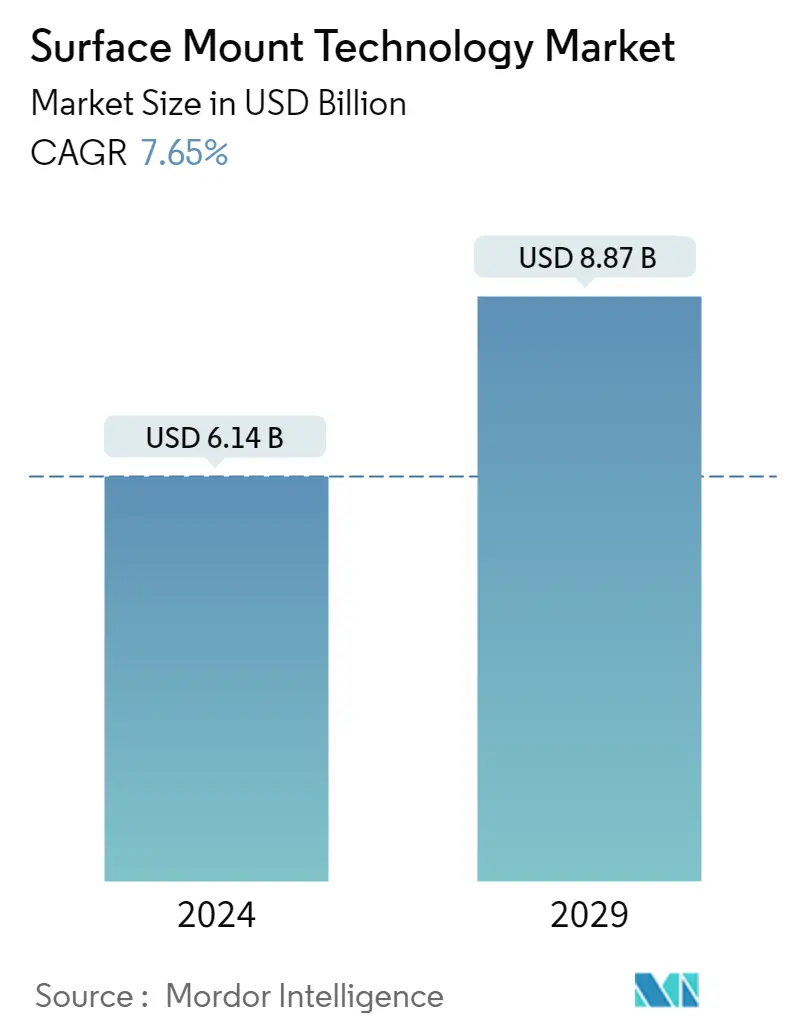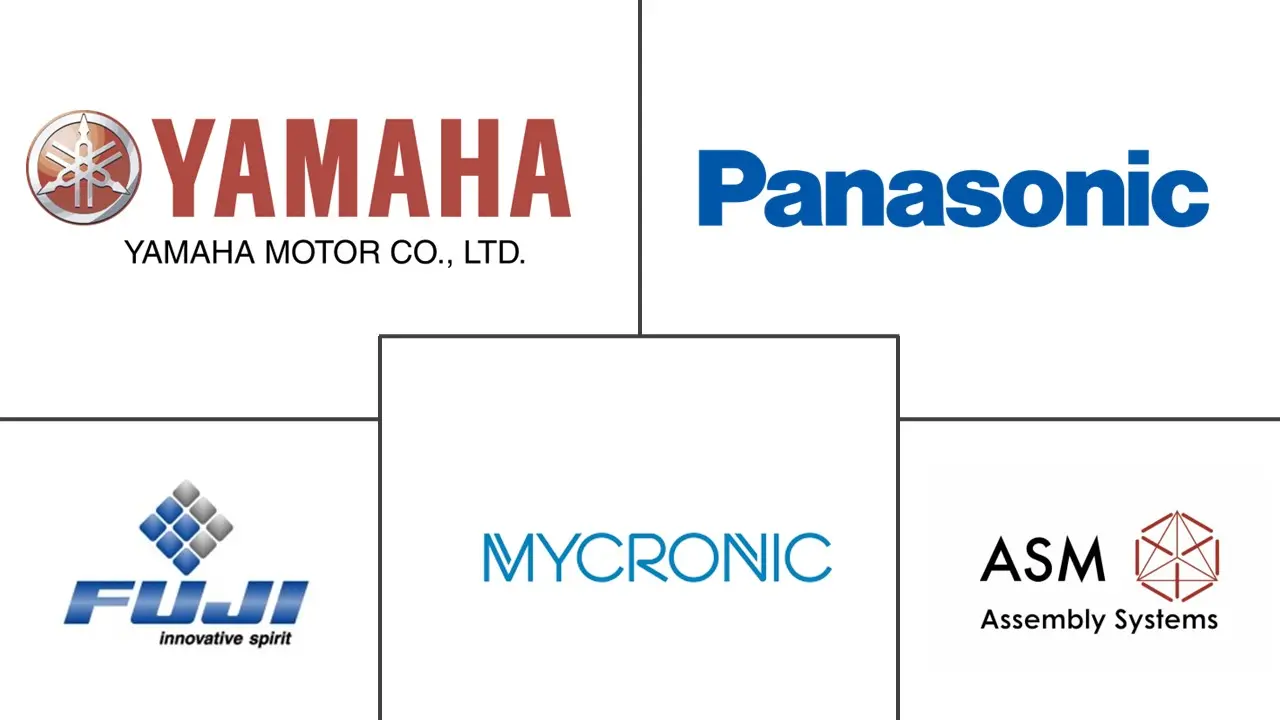Market Size of Surface Mount Technology Industry

| Study Period | 2019 - 2029 |
| Market Size (2024) | USD 6.14 Billion |
| Market Size (2029) | USD 8.87 Billion |
| CAGR (2024 - 2029) | 7.65 % |
| Fastest Growing Market | Asia Pacific |
| Largest Market | Asia Pacific |
Major Players
*Disclaimer: Major Players sorted in no particular order |
Need a report that reflects how COVID-19 has impacted this market and its growth?
Surface Mount Technology (SMT) Market Analysis
The Surface Mount Technology Market size is estimated at USD 6.14 billion in 2024, and is expected to reach USD 8.87 billion by 2029, growing at a CAGR of 7.65% during the forecast period (2024-2029).
The exponential growth of the electronics industry, the shrinking of current electronic components, the increased usage of flexible printed circuit boards, and the growing interest in electric cars are some of the key drivers driving the rise of surface mount technology.
- In the upcoming years, surface mount technology is anticipated to experience increasing acceptance. Industries are shifting their preference from through-hole technology to surface mount technology as a result of its many benefits, including fewer components, better component density, improved mechanical performance, and easier and faster automated assembly.
- The major key benefits of converting to surface mount technology, to put it simply, were speed, cost-effectiveness, and reliability. Because of the simpler production processes and easier execution, all these advantages are useful during the assembly process. SMT is a significant improvement over conventional leaded components. The SMT components in printed circuit boards provide a quicker, lighter, and more reliable substitute for the conventional leaded components. Additionally, it's important to note that manufacturers and designers have been able to significantly reduce costs by using SMT components in PCBs.
- Electric car sales and manufacturing are increasing as a result of the rising demand for their use, offering this market promising growth opportunities. Because it offers superior mechanical efficiency under shock and vibration, surface-mount technology is used to manufacture the majority of the electrical components used in electric vehicles.
- Using conductive tracks and other features, circuit boards can mechanically support and electrically link electronic components. With the advent of Surface Mount Technology technology, PCB assembly is now done by solder joints, making spare parts and materials easier to remove from the target parts in the event of failure. In the past, PCBs were created using a method that fixed the component and made it extremely challenging to disassemble.
- Most of the electronics are expected to be more compact, and there is an increase in demand for smaller units, where SMT makes this possible. But even though these units are not as bulky as older devices, there is a much higher component density, as well as more connections per component. This means that electronics can be more advanced and efficient than ever before while the form factor is still as compact as possible.
- However, SMT is not suited for any large, high-power/high-voltage parts. Also, the small size of SMDs can create issues in that the solder joint dimensions continue to become smaller as advances are made toward ultra-fine pitch technology. Ultimately, this means that less solder can be used for each joint, which can result in voiding and integrity issues.
- Additionally, the market is faced with a few difficulties. For instance, SMT demands more meticulous attention to detail than through-hole installation would. Additionally, the cost of an SMT machine as an investment is very expensive.
- The COVID-19 outbreak has had a considerable impact on the global and national economies. Many end-user industries have been affected, including those in electronics manufacturing. A large part of manufacturing includes work on the factory floor, where people are in close contact as they collaborate to boost productivity. The market is facing component shortages for building circuit boards. As many component manufacturers shut down or run at minimum capacity, the ability to keep a healthy stock of components on hand has been dramatically reduced. Many PCB components required for the operation of SMT assembly lines get shipped on regular commercial airlines as cargo. As flights have been canceled owing to international travel restrictions, shipping availability has diminished, and prices have escalated.
